How to Wash a Duvet in the Bath
Many people use a duvet in their homes but struggle when it comes to washing it. The first step is to know what kind of duvet you have. Duvets have different fillings, and the filling in your duvet will determine whether or not you can wash it in the bath or not.
Once you know a duvet can be washed, it’s time to start cleaning. Read our guide below on how to wash a duvet in the bath and follow our step by step process.
When it might be suitable to wash a duvet in the bath
You should consider washing your duvet in the bath only if having it professionally cleaned at the dry cleaners is not an option or it’s too large to fit in the washing machine. You also need to check the filling of your duvet to see if you can wash it. Duvets usually feature a synthetic filling or natural filling, and these have different cleaning requirements.
Hollowfibre duvets and synthetic-fibre fillings are safe to wash in the bath. Make sure you read the instructions carefully, as some may still need dry cleaning and others require special detergents. If the filling comes from natural fibre such as goose or duck feathers, you shouldn’t wash it on your own as they can only be dry cleaned.
Before you start
There are a few essential things to check before starting.
Read the washing label
Even if a duvet has synthetic fibre filling, you need to check the label. Some may recommend machine washing or dry cleaning only. Going against these suggestions could damage your duvet, so it’s important to check how often to wash bedding and how to wash a duvet.
Check for open seams or holes
Washing a duvet in the bath exposes the fabric to friction due to the agitation needed to remove dirt. Any holes and open seams are at risk of splitting and tearing, creating more damage. It’s important to check for any open seams along the duvet and fix them before washing.
You also need to look for any holes. You can fix small holes by applying fabric glue around the hole’s edges, then bringing the edges together. A swatch of fabric, preferably of the same colour as the duvet fabric, can be used to patch for larger holes.
Spot clean any tough stains
A duvet has a lot of fabric and is bulky., but you don’t need to struggle with tough stains as you wash in the bath as this is tiring. Identify the prominent stains on the duvet and do spot cleaning to remove stains from a duvet:
- Move the filling inside the duvet away from the stained area
- Apply any gentle detergent onto the stained areas, such as a baking soda and water paste or a water and vinegar solution
- Blot the stained area with a clean cloth, preferably white just in case it isn’t colourfast
- Agitate the fabric by rubbing it against itself to help loosen the stain better
- Rinse the area with clean water, squeeze out any excess moisture, and check to confirm the stain has gone
Since this is preparation for a wash, you don’t need to dry it out. If you weren’t going to wash it, you could use a blow dryer to dry out the area you washed. Make sure to dry it out thoroughly because duvets and moisture are a formula for mildew.
7 steps to washing your duvet in the bath
Step 1: Fill your tub with water
Duvet sizes differ widely, and most people do not think about it. Your duvet may be bigger than you expect. Whatever the size, it will most likely fit in your tub, but it’s good to confirm before you make the duvet wet and twice as heavy. If it fits, fill your tub halfway with tepid water to allow room for water displacement when you put the duvet in.
Step 2: Add a detergent
Add a mild detergent to the water, then disturb the water’s surface with your hand till bubbles form and the feel of the water becomes a little slimy. Put the duvet in at this point.
Step 3: Make sure your feet are clean and step in
Check that your feet are clean, then step into the bath. Hold on to something for extra safety and proceed to knead the duvet with your feet for around 2 minutes or until you feel it’s enough. You can drain the water and repeat the process if the water gets discoloured by the dirt.
Step 4: Step out and scrub a little with your hands
After kneading with your feet, step out of the bath carefully and dry your feet. You can add a few minutes of scrubbing the material in your hands, especially along particularly dirty areas. This step is not necessary if the duvet wasn’t particularly dirty.
Step 5: Drain the water and start rinsing
Drain the water out of the bath but don’t remove the duvet. Fill up the tub with clean water and rinse the duvet as many times as it takes to get the detergent out. Improper rinsing can leave white streaks on your duvet, making it look stained.
Step 6: Squeeze out the excess water
After the final rinse, squeeze out the excess water by rolling up the duvet as tightly as you can, then unroll it fast to avoid wrinkles. Do this as many times as needed to get rid of all the water. Don’t wring it as this contributes to wrinkles.
Step 7: Hang out in the sun to dry
After successfully squeezing out all the excess water, hang it out in the sun to dry rather than tumble drying a duvet. The windiest area would be the most ideal because wind helps it dry faster. Go back every 30 minutes to monitor its progress and redistribute the filling so that it dries appropriately too.
Making sure the duvet dries appropriately is probably the next most crucial thing after ensuring the dirt comes off. Any moisture will invite mildew which is harmful to your health and could damage the duvet as well. Once you've finished washing, discover the best way to store your duvet.
If you do want to replace your duvet, at Sleepseeker we’re here to help. Read our guides on duvet sizes and duvet togs to find the perfect match for you. We have a wide range of duvets to choose from - including feather duvets and luxury duvets - alongside pillows, mattress toppers and more.
What's trending now...
-
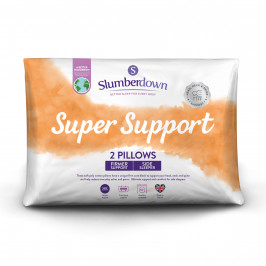
Slumberdown Super Support Firm Support Side Sleeper Pillow, 2 Pack
£17.00
Shop Now -
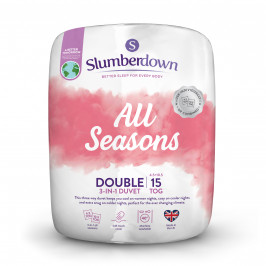
Slumberdown All Seasons Combi 15 Tog (10.5 + 4.5 Tog) Double Duvet
£30.50
Shop Now -

Slumberdown Paws for Slumber Olive Green Pet bed, Medium
£39.00
Shop Now -
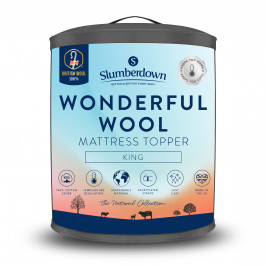
Slumberdown Wonderful Wool Mattress Topper, King
£60.00
Shop Now -

Slumberdown Paws for Slumber Extra Large Pet Bed Spare Cover, Grey
£20.00
Shop Now -
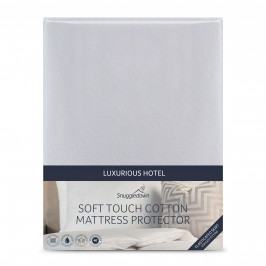
Snuggledown Luxurious Hotel Cotton Waterproof Mattress Protector, Double
£23.50
Shop Now -

Slumberdown Wonderfully Warm Electric Blanket - Single
£60.00
Shop Now -
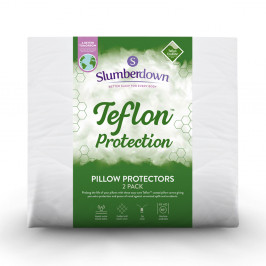
Slumberdown Teflon Pillow Protector - Pack of 2
£14.00
Shop Now -

Slumberdown Unwind Outside 2-in-1 Waterproof Cocoon Set, Burnt Orange
£30.00
Shop Now -

Slumberdown Paws For Slumber Sherpa Pet Bed, Medium
From: £25.00
Shop Now -
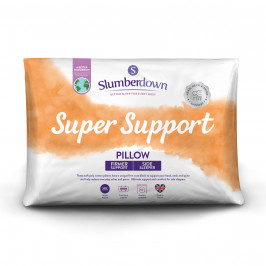
Slumberdown Super Support Firm Support Side Sleeper Pillow
From: £17.00
Shop Now -
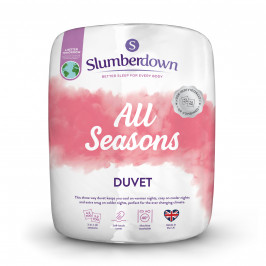
Slumberdown All Seasons Combi Duvet
From: £25.50
Shop Now -

Slumberdown Paws for Slumber Medium Pet Bed
From: £39.00
Shop Now -
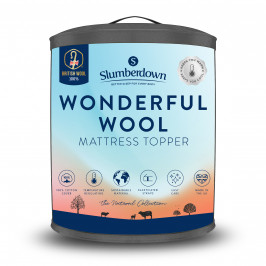
Slumberdown Wonderful Wool Mattress Topper
From: £54.50
Shop Now -

Slumberdown Paws for Slumber Extra Large Pet Bed Spare Cover
From: £20.00
Shop Now -
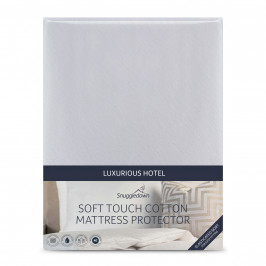
Snuggledown Luxurious Hotel Cotton Waterproof Mattress Protector
From: £19.50
Shop Now -

Slumberdown Wonderfully Warm Electric Blanket
From: £60.00
Shop Now -

Slumberdown Unwind Outside 2-in-1 Waterproof Cocoon Set
From: £30.00
Shop Now -
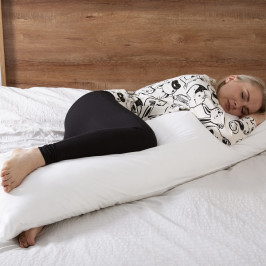
Slumberdown Body Support Pillow, 1 Pack, Includes 100% Cotton Pillow Case
£20.00
Shop Now -
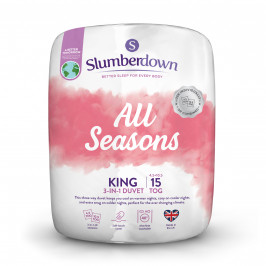
Slumberdown All Seasons Combi 15 Tog (10.5 + 4.5 Tog) King Size Duvet
£34.00
Shop Now -

Slumberdown Paws for Slumber Navy Pet Bed, Large
£49.00
Shop Now




